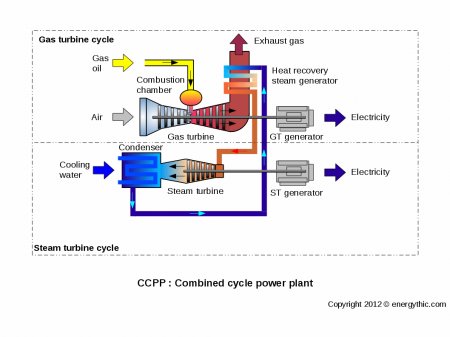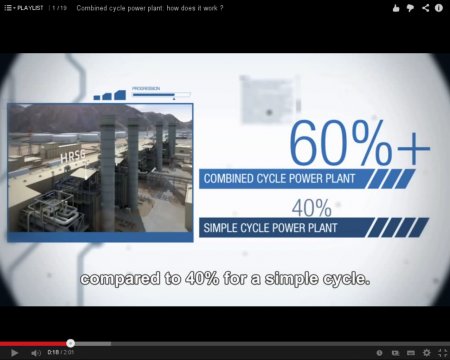-
Combined cycle power plant
How does it work ?
Definition
In electric power generation, the combined cycle power plant (CCPP) is one type of fossil-fuel plant. The combined cycle plant is an assembly of heat engines that work in tandem off the same source of heat, converting it into mechanical energy, which in turn usually drives electrical generators. The principle is that the exhaust of one heat engine is used as the heat source for another, thus extracting more useful energy from the heat, increasing the system's overall efficiency and reducing fuel costs. This works because heat engines are only able to use a portion of the energy their fuel generates (usually less than 40%). In an ordinary (non combined cycle) heat engine the remaining heat (e.g., hot exhaust fumes) from combustion is generally wasted.The combined cycle power plant produces only electricity contrarily to combined heat and power plant.
In stationary power plants, a widely used combination is a gas turbine (operating by the Brayton cycle) burning natural gas or synthesis gas from coal, whose hot exhaust powers a steam power plant (operating by the Rankine cycle). The global installation can achieve with a recovery boiler fit with triple superheating bundles a thermal efficiency of around 60%, in contrast to a single cycle steam power plant which is limited to efficiencies of around 35-42%.



